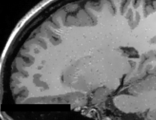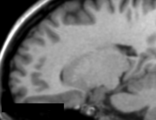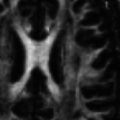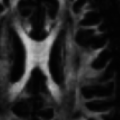Difference between revisions of "Documentation/Nightly/Extensions/BrainTissuesExtension"
Acsenrafilho (talk | contribs) (Added the BrainTissuesExtension wikipage) |
Acsenrafilho (talk | contribs) m |
||
| Line 27: | Line 27: | ||
[[Image:BrainTissuesExtension-logo.png|left]] | [[Image:BrainTissuesExtension-logo.png|left]] | ||
| − | + | Brain tissue segmentation plays an important role in many different image processing steps, which can offer a possibility to study different parts of the brain in different hypothesis, such as neurodegenerative disease progression and global brain structural quantitative parameters (brain atrophy, for instance). For this reason, tissue segmentation procedures have been intensively studied in the recent years. This extension aims to offer a fast, reliable and simple solutions for brain tissue segmentation, in which are separated in different modules. See the modules list below to find the most appropriate tool for your study. | |
<!-- ---------------------------- --> | <!-- ---------------------------- --> | ||
{{documentation/{{documentation/version}}/extension-section|Modules}} | {{documentation/{{documentation/version}}/extension-section|Modules}} | ||
| − | *[[Documentation/{{documentation/version}}/Modules/| | + | *[[Documentation/{{documentation/version}}/Modules/BrainStructuresSegmenter|Brain Structures Segmenter]] |
<!-- ---------------------------- --> | <!-- ---------------------------- --> | ||
Revision as of 23:45, 25 November 2016
Home < Documentation < Nightly < Extensions < BrainTissuesExtension
|
For the latest Slicer documentation, visit the read-the-docs. |
Introduction and Acknowledgements
|
This work was partially funded by CAPES and CNPq, a Brazillian Agencies. Information on CAPES can be obtained on the CAPES website and CNPq website. | |||||||||
|
Extension Description
Brain tissue segmentation plays an important role in many different image processing steps, which can offer a possibility to study different parts of the brain in different hypothesis, such as neurodegenerative disease progression and global brain structural quantitative parameters (brain atrophy, for instance). For this reason, tissue segmentation procedures have been intensively studied in the recent years. This extension aims to offer a fast, reliable and simple solutions for brain tissue segmentation, in which are separated in different modules. See the modules list below to find the most appropriate tool for your study.
Modules
Use Cases
Most frequently used for these scenarios:
- Use Case 1: a
- b
Similar Extensions
N/A
References
- paper
Information for Developers
| Section under construction. |
Repositories:
- Source code: GitHub repository
- Issue tracker: open issues and enhancement requests









